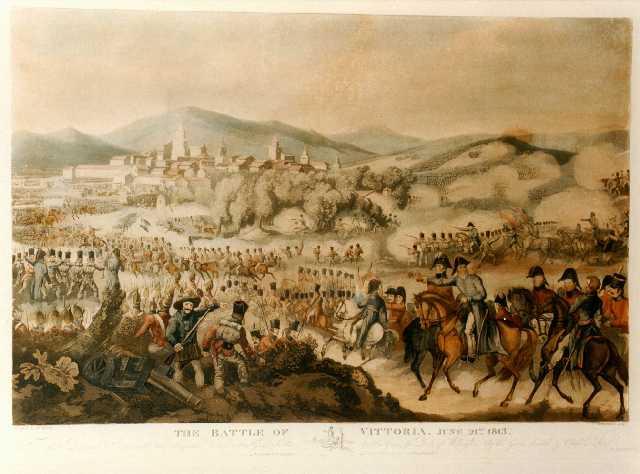What’s in a name?
Reading Time: 4 minutes
Today Vittoria Street in the Jewellery Quarter is known for being the home of the School of Jewellery, but where did the name come from?
David Mahony, chairman of the JQDT, explains…
One of the great curiosities of the Jewellery Quarter is how it has been unspoilt by traffic engineers, so that today it is exactly as it was laid out by the half dozen or so families who owned the estates just to the north of the city that were open fields in the 1780’s and entirely engulfed 50 years later. Occasionally the rectilinear grid of streets which each landowner developed crash or bump into each other to give us a kink, a counter intuitive path or a dial and irregular shaped sites with buildings such as a Spencer, Branston and Tenby Street.
The curiosity of the layout is matched by the naming of the streets which follow an equally idiosyncratic logic. You can distinguish the estates from the grid and their choice of names – family, relatives, royalty, local features favoured by one or another – but it is on this northern edge where a more political ‘Whiggist’ theme starts; Regent Street, Frederick Street and …… Vittoria Street; Vittoria?
Why did Birmingham have a street named after a small Basque town?
On 21st June 1813 – midsummer’s day – the battle of Vitoria Gasteiz was fought between a French army and Wellington’s coalition of British, Spanish and Portuguese forces. Although the Duke described his troops on the day as ‘the scum of the earth’, it was to be the decisive battle of the Peninsula War; by Christmas the British were across the Pyrenees and by April Napoleon was off to Elba. Fin; or so it seemed.
Across Europe excitement followed closely on the news and within a few weeks Beethoven’s Battle Symphony was written to celebrate Vitoria. The first movement includes trumpet signals for battle from both British and French armies, with ‘Rule, Britannia’ and ‘Marlborough s’en va-t-en Guerrero’ (or rather what we stole to become ‘For he’s a jolly good fellow’). The second movement has varied treatments of the National Anthem, ‘God save the King’.
It is rarely performed and was called atrocious by the critics to whom Beethoven, who surely had no illusions about its merits, responded protectively: “What I shit (scheisse) is better than anything you could ever think up!”
Our Vittoria Street was laid out in the first decade of the 1800s and in 1810 it was known as Martin Street. Indeed it did not change on maps until the 1820s, although there is evidence that it was known locally as Vittoria Street just a short time after the battle.
Incidentally many will by now have noted that there is an additional ‘t’ which each of the small number of streets in the UK commemorating the battle seem to have used. Smethwick’s Vittoria Street was supposed to have something to do with canon being cast in the Black Country and canons were very much a ‘weapon of choice’ in the wide and dry expanses of Northern Spain. The most likely explanation for our Vittoria Street is perhaps in Beethoven’s dedication of the Battle Symphony to the Prince Regent and the fact that the family were in awe to ‘Prinny’ having already named streets after him. Whilst war ravaged Europe and the Luddities threatened at home, the Prince had managed to live in an elegant world somewhat divorced from reality, however Napoleon’s seeming demise was somehow associated with him and seen as an end to 20 years of conflict and a victory for the new forces of reason.
Within a few months things became confused again; Napoleon bounced back for 100 days and with his final defeat at Waterloo it was that battle that gained the importance Vitoria might have had. Even more confusing was that within 20 years Birmingham, the engine for industrial revolution, and Thomas Attwood’s Birmingham Political Union had become the driving force for political reform with 200,000 people – the largest public assembly ever in the UK – meeting in the Jewellery Quarter.
So we will be remembering a battle in a far-off country that is the start of a series of events here that will recall the Jewellery Quarter’s role in changing the face of the world politically as well as industrially.
The Regency as a setting for romance is appealing in great part due to the rich dichotomy of Society vs. history, the real world vs. the oblivous aristocratic fantasy world. It is that small, glittering, elegant world seemingly insulated from the horrors of the Napoleonic Wars, the beginnings of political, social, and agricultural reform, and the onset of the industrial revolution that provides a very real and complex backdrop for Candice’s novels. While the war ravaged the Continent and affected most English families through the loss of sons, husbands, fathers, brothers, and uncles, and while the Luddites rioted against industrialization, society persevered in its elegant finery at balls and routs and parties of all kinds.
The leader of this elite, fashionable society was the Prince Regent himself, who was a fat, pleasure-seeking womaniser, self-indulgent almost to the point of hedonism. He was also one of the best educated monarchs England has ever seen. He was a major supporter of the arts, and the scope of his interests (and extravagant spending) included architecture, painting, music, and fashion, so let’s raise a glass to our incredible historic past!


